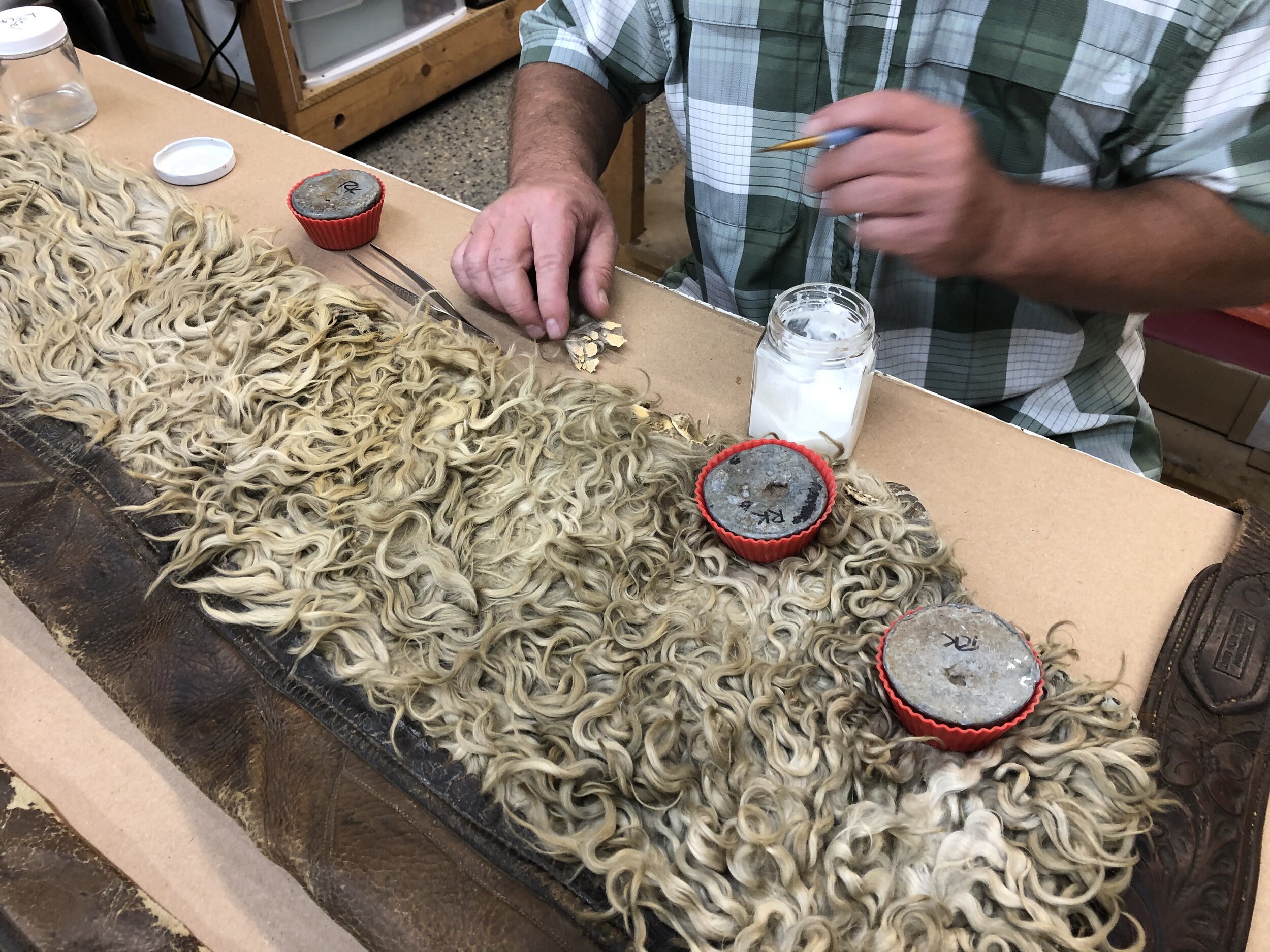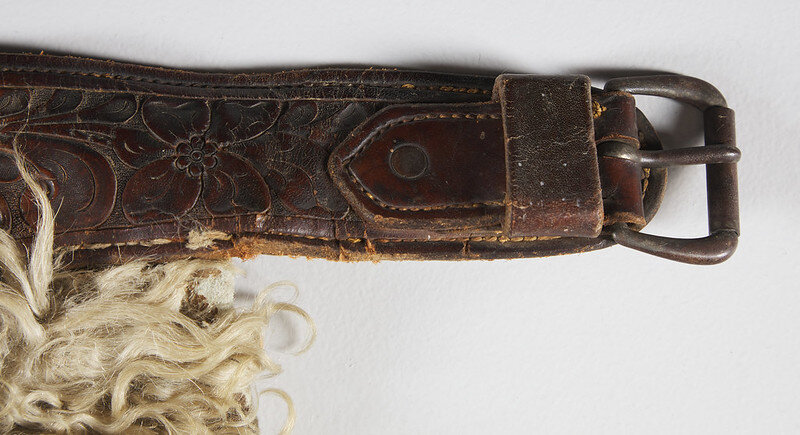Yee-haw! Chaps from the 1800’s might be one of the most unusual projects we've had lately and one of the most fun. It's easy to imagine a cowboy riding in style in these leather and wool chaps that have so far managed to withstand the test of time.
The chaps, when they first arrived at The Center.
After having been stored in a folded position for a quite some time, the chaps were brought into The Center and to the attention of Stephen Ryan, our Senior Furniture Conservator. While it might seem out of his department's purview, Stephen's expansive knowledge and skillset made this the perfect project for him to tackle.
Being folded for so long had caused some deformation around each leg's knees, and the leather had become dull and cracked, especially at the fold and belt edges. Some areas exhibited a white, powdery mold. The inner thigh area where the hair and tanned leather meet had also experienced some leather and hair deterioration, probably from rubbing together when in use. The chaps' inner edge had experienced some hair loss and had been matted and discolored in several areas. There were a few tears and accretions along the waistline and moderate corrosion on the belt buckle. A maker's mark was found on the belt that read, "AL. Furstnow, Miles City Mont."
Before treatment.
Before treatment.
Stephen began treatment by carefully cleaning the leather and hair with a HEPA vacuum. The leather and hair were then disinfected using appropriate conservation methods and materials. Once disinfected, the leather was cleaned again with a proper surfactant.
The areas that experienced some lifting hair were then consolidated as best possible into their original location, and tangles in the hair were separated as best possible.
Weights were used to hold certain parts of the chaps steady as the hair was carefully separated.
The weathering of the buckle was reduced again using appropriate conservation methods and materials.
The buckle, once weathering was reduced.
The tanned leather surface was lightly waxed to offer a barrier between the leather and its existing surroundings for protection.
The tanned leather, after a light wax was applied for protection.
The finished, fully conserved chaps are ready to be returned to work on the ranch or be displayed in a frame to be enjoyed for years to come. These chaps were a unique piece, and it was truly fascinating to watch them be returned to their original form. Maybe one day, they'll ride again!
After treatment.








